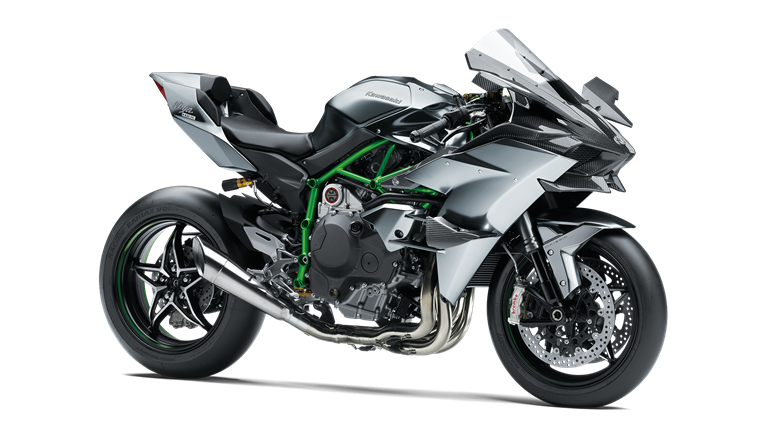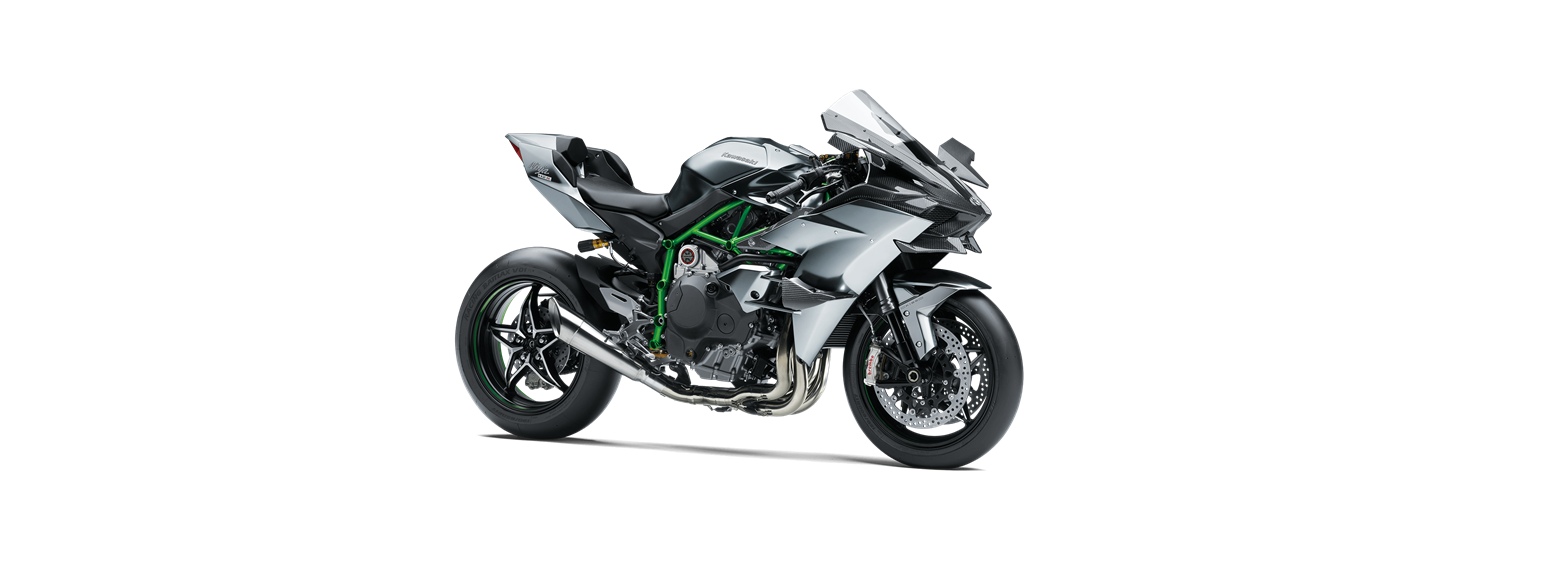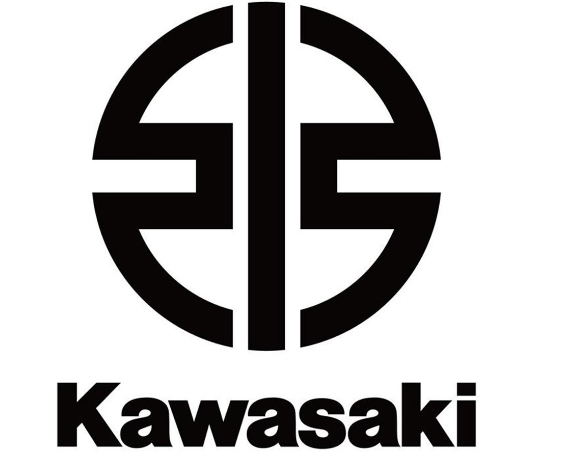2022 Kawasaki NINJA H2 R Cleaning Your Motorcycle

Cleaning Your Motorcycle
General Precautions
Frequent and proper care of your Kawasaki motorcycle will enhance its appearance, optimize overall performance, and extend its useful life. Covering your motorcycle with high-quality, breathable motorcycle cover will help protect its finish from harmful UV rays and pollutants, and reduce the amount of dust reaching its surfaces.
WARNING
The build-up of debris or flammable material in and around the vehicle chassis, engine, and exhaust can cause mechanical problems and increase the risk of fire. When operating the vehicle in conditions that allow debris or flammable material to collect in and around the vehicle, inspect the engine, electrical component, and exhaust areas frequently. If debris or flammable materials have been collected, park the vehicle outside and stop the engine. Allow the engine to cool, then remove any collected debris. Do not park or store the vehicle in an enclosed space prior to inspecting for the build-up of debris or flammable materials.
- Be sure the engine and exhaust are cool before washing.
- Avoid applying degreaser to seals, brake pads, and tires.
- Avoid all harsh chemicals, solvents, detergents, and household cleaning products such as ammonia-based window cleaners.
- Gasoline, brake fluid, clutch fluid, and coolant will damage the finish of painted and plastic surfaces: wash them off immediately.
- Avoid wire brushes, steel wool, and all other abrasive pads or brushes.
- Use care when washing the windshield and other plastic parts as they can easily be scratched.
- Avoid using pressure washers; water can penetrate seals and electrical components and damage your motorcycle.
- Avoid spraying water in delicate areas such as air intakes, fuel systems, brake components, electrical components, muffler outlets, and fuel tank openings.
Washing Your Motorcycle
- Rinse your motorcycle with cold water from a garden hose to remove any loose dirt.
- Mix a mild neutral detergent (designed for motorcycles or automobiles) and water in a bucket. Use a soft cloth or sponge to wash your motorcycle. If needed, use a mild degreaser to remove any oil or grease buildup.
- After washing, rinse your motorcycle thoroughly with clean water to re- move any residue (residue from the detergent can damage parts of your motorcycle).
- Use a soft cloth to dry your motorcycle. As you dry, inspect your motorcycle for chips and scratches. Do not let the water air dry as this can damage the painted surfaces.
- Start the engine and let it idle for several minutes. The heat from the engine will help dry moist areas.
- Carefully ride your motorcycle at a slow speed and apply the brakes several times. This helps dry the brakes and restores them to normal operating performance.
- Lubricate the drive chain to prevent rusting.
NOTE
- (For silver mirror paint) If there are scrapes on the painted surface, do not wash your motorcycle with a stream of high-pressure water. The paint may come off.
Radiator
Clean off any obstructions with a stream of low-pressure water.
NOTICE
Using high-pressure water, as from a car wash facility, could damage the radiator fins and im- pair the radiator’s effectiveness. Do not obstruct or deflect airflow through the radiator by installing unauthorized accessories in front of the radiator or behind the cooling fan. Interference with the radiator airflow can lead to overheating and consequent engine damage.
Windshield and Other Plastic
Parts After washing use a soft cloth to gently dry plastic parts. When dry, treat the windshield and other nonpainted plastic parts with an approved plastic cleaner/polisher product.
NOTICE
Plastic parts may deteriorate and break if they come in contact with chemical substances or household cleaning products such as gasoline, brake fluid, window cleaners, thread-locking agents, or other harsh chemicals. If a plastic part comes in contact with any harsh chemical substance, wash it off immediately with water and a mild neutral detergent, and then inspect for damage. Avoid using abrasive pads or brushes to clean plastic parts, as they will damage the part’s finish.
Chrome and Aluminum
Chrome and uncoated aluminum parts can be treated with a chrome/al-coated aluminum minimum polish. should be washed with a mild neutral detergent and finished with spray polish. Aluminum wheels, both painted and unpainted can be cleaned with special non-acid-based wheel spray cleaners.
Vinyl and Rubber
Vinyl parts should be washed with the rest of the motorcycle, then treated with a vinyl treatment. The sidewalls of tires and other rubber components should be treated with a rubber protectant to help prolong their useful life.

